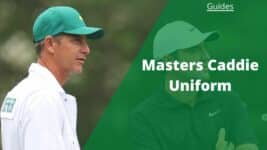In golf, timing is everything, and that applies not just to swings but to the words you choose to shout from the gallery. While some tournaments demand near-monastic silence, others invite a bit of good-natured banter. The key is knowing when to speak, what to say, and how to make the game more enjoyable for everyone without becoming that fan.
From polite clapping at Augusta to playful puns at the Waste Management Open, heckling in golf is less about tearing players down and more about adding a spark of humor to the day. Done right, it is part cheerleading, part comedy, and part understanding the rhythm of the game.
Read the Room
Before you even think about speaking up, read the room, or in this case, the course. Some events, like The Masters, enforce a strict code of etiquette. If you are lucky enough to be there, save your voice for applause and keep it at a respectable volume. One wrong word could be your last at the most exclusive ticket in sports.
On the flip side, there are tournaments like the Waste Management Open, where the crowd is part of the entertainment. As long as you keep it family-friendly and avoid speaking during a player’s swing, you can let your wit fly. Just remember you are adding to the experience, not hijacking it. The golf etiquette is different at these two events.
A well-timed quip can lighten the mood. A poorly timed one can ruin a shot. The universal rule is simple: never speak during a player’s pre-shot routine or swing. Safe moments include:
- As players leave the tee box after everyone has hit
- While they walk up the fairway
- As they leave a green
- During long waits or delays, as long as you are not distracting
If you see a marshal holding up a quiet sign, your set is over. Smile, nod, and zip it.
Good heckling is situational, not personal. You can poke fun at the wind, the rough, or even your own golf game, but steer clear of comments about appearance, nationality, personal life, or anything that would make a kindergartner’s teacher raise an eyebrow.
Think of it like seasoning. A dash adds flavor, but too much ruins the dish. Keep your jabs light and your tone respectful.
Examples:
- After a booming drive: “I have been on flights shorter than that.”
- From thick rough: “Welcome back to civilization.”
- After a perfect draw: “Michelangelo could not carve it better.”
And puns are always in play. If any sport is, golf is built for wordplay. A sharp pun can land well in almost any setting.
Examples could include things like, “And I thought my kid could draw.” Or, “just when I thought I left the snacks at in the truck. You bring the slices.” Puns keep the mood light and the commentary non-confrontational.
When a player misses a shot, the goal is to soften the moment, not rub it in. Gentle humor shows you are rooting for them, even in a tough spot.
Examples:
- “Happens to the best, which obviously includes you.”
- “Nice leave. Perfect angle for the highlight reel.”
Be Real. Be Relevant.
If the tournament leans into local culture, sprinkle it into your heckles. In Arizona, you might say, “Friendly reminder, this is my calm voice.” In Texas: “That one needs its own zip code, y’all.” If you are in Scotland: “Proper links golf, the ball travels and the soul follows.”
Local references connect you to the crowd and make the moment more memorable.
Younger fans can play with modern slang such as “Nice lag, 10 outta 10 would two-putt again.” Older fans might channel the classic golf commentator voice, speaking in hushed, faux-serious tones from a safe distance: “Ah, here we see elite tempo in its natural habitat.”
The point is not to sound cool, it is to sound fun.
Respect the flow of the crowd. Do not push past people, cut lines, or hog rope-side spots. Share shade, offer water, and make friends. A good heckler is also a good neighbor.
If a player engages you, respond with humility. If they joke about a missed line, you could answer, “The green underestimated you. Happens.” If they tease your own game, you might say, “I am still trying to get my 7 iron past 170.”
Players are looser in practice rounds, so light heckling is often more welcome. That is when you can roll out your more creative material, like, “Excellent use of the 12 degree launch window, sir Euclid” or “Ball meets face, takes flight, fairway nods, golf briefly makes sense.”
If you are drinking, think sips, not sagas. The difference between witty and wobbly can be as thin as the top line of a forged blade iron. Know when to call it a day for your commentary.
There are some absolute do nots:
- Never make noise during a swing
- No profanity or slurs
- No personal digs or controversy references
- No air horns or tired “mashed potatoes” calls
- No moving in sight lines or snapping pictures mid-swing
The Gentle Jester
Think of yourself as an unpaid atmosphere engineer. Your job is to add bubbles to the champagne without shaking the bottle. Your goal is a pro’s smirk, a stranger’s laugh, or a fairway just a bit less tense.
Done well, you will leave the course with your voice intact, your conscience clear, and a few people telling you, “You were the best part of my day.” In golf, that is the kind of leaderboard worth topping.
Clint is PGA-certified and was a Head Teaching Professional at one of Toronto's busiest golf academies. He was also featured on Canada's National Golf TV program, "Score Golf Canada," twice. He graduated with a degree in Golf Management from the College of the Desert in California and studied under Callaway's co-founder, Tony Manzoni. He has a handicap index of 6.2 and spends the winters near Oaxaca, Mexico, where he plays twice a month at the Club de Golf Vista Hermosa. He's written over 100 articles at GolfSpan since 2021. You can connect with Clint at LinkedIn, FB, his website, or Clintcpga@gmail.com.







